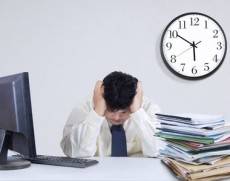May 5, 2016
Pregnancy and maternity discrimination has risen over the past year 0
 There has been a 25 percent rise in people seeking advice on pregnancy and maternity discrimination over the past year; new figures from Citizens Advice have revealed, and it has growing evidence that pregnant women and new mums have had their working hours cut, been put onto zero-hours contracts, pressured to return to work early from maternity leave and, in extreme cases, have been forced out of their jobs. New figures from the national charity also show there has been a 22 percent increase in people seeking online help, with the charity’s web advice viewed 22,000 times over the last 12 months. Between April 2015 and March 2016 almost 2,000 people turned to Citizens Advice for help with pregnancy and maternity discrimination, up from just over 1,500 in the previous 12 months. In 4 out of 5 cases people were also seeking help with problems at work, a third of which were about redundancy or dismissal.
There has been a 25 percent rise in people seeking advice on pregnancy and maternity discrimination over the past year; new figures from Citizens Advice have revealed, and it has growing evidence that pregnant women and new mums have had their working hours cut, been put onto zero-hours contracts, pressured to return to work early from maternity leave and, in extreme cases, have been forced out of their jobs. New figures from the national charity also show there has been a 22 percent increase in people seeking online help, with the charity’s web advice viewed 22,000 times over the last 12 months. Between April 2015 and March 2016 almost 2,000 people turned to Citizens Advice for help with pregnancy and maternity discrimination, up from just over 1,500 in the previous 12 months. In 4 out of 5 cases people were also seeking help with problems at work, a third of which were about redundancy or dismissal.

































April 26, 2016
Men paid more after having kids, as mothers’ pay and prospects diminish 0
by Sara Bean • Comment, Flexible working, Workplace
More →